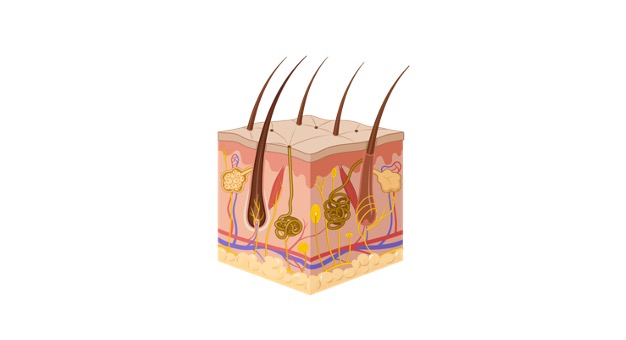Dense Regular Connective Tissue Definition
Dense regular connective tissue is a type of connective tissue characterized by extracellular fibers particularly collagen fibers arranged in parallel bundles.
A connective tissue, which is made up primarily of fibers, especially type I collagen is called dense connective tissue. The fibers are generated by the fibroblasts in the matrix. As compare to other loosely connective tissues, it is dense and closely compacted thus it is known as dense connective tissue.
Usually is found in two forms-
(1) dense regular connective tissue
(2) dense irregular connective tissue.
The dense regular connective tissue has collagen fibers that have arranged in parallel bundles. The body parts bind together with the help of these parallel bundles. The great tensile strength of fibers resists the pulling force, particularly from a single direction. Examples of dense regular connective tissue include ligaments and tendons. Tendons have been used to connect bones to muscles whereas the bone to another bone is joined by a ligament. The perichondrium around the tracheal cartilage and the tunica albuginea around the testis are some other examples of dense connective tissue. There are mainly two forms of dense regular connective tissue, i.e. white or yellow fibrous connective tissue.
Citations
Share
Related Post

11 Postdoctoral Jobs at Delft University of Technology (TU Delft), Netherlands
If you’re a PhD degree holder and seeking postdoctoral fellowships, Delft University of Technology

09 Fully Funded PhD Programs at University of Antwerp, Belgium
If you’re a Masters degree holder and seeking Fully Funded PhD Programs, University of

11 Postdoctoral Jobs at University of Arizona, Arizona
If you’re a PhD degree holder and seeking postdoctoral fellowships, University of Arizona, Arizona

03 Fully Funded PhD Programs at Vlaams Instituut voor Biotechnologie, Belgium
If you’re a Masters degree holder and seeking Fully Funded PhD Programs, Vlaams Instituut

09 Postdoctoral Jobs at University of California, Los Angeles, California
If you’re a PhD degree holder and seeking postdoctoral fellowships, University of California, Los

04 Fully Funded PhD Programs at Umeå University, Umeå, Sweden
If you’re a Masters degree holder and seeking Fully Funded PhD Programs, Umeå University,

11 Postdoctoral Jobs at Delft University of Technology (TU Delft), Netherlands
If you’re a PhD degree holder and seeking postdoctoral fellowships, Delft University of Technology

09 Fully Funded PhD Programs at University of Antwerp, Belgium
If you’re a Masters degree holder and seeking Fully Funded PhD Programs, University of

11 Postdoctoral Jobs at University of Arizona, Arizona
If you’re a PhD degree holder and seeking postdoctoral fellowships, University of Arizona, Arizona

03 Fully Funded PhD Programs at Vlaams Instituut voor Biotechnologie, Belgium
If you’re a Masters degree holder and seeking Fully Funded PhD Programs, Vlaams Instituut

09 Postdoctoral Jobs at University of California, Los Angeles, California
If you’re a PhD degree holder and seeking postdoctoral fellowships, University of California, Los

04 Fully Funded PhD Programs at Umeå University, Umeå, Sweden
If you’re a Masters degree holder and seeking Fully Funded PhD Programs, Umeå University,

